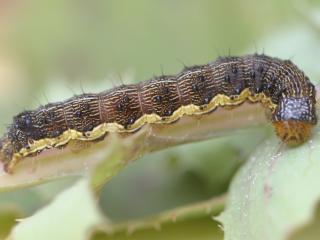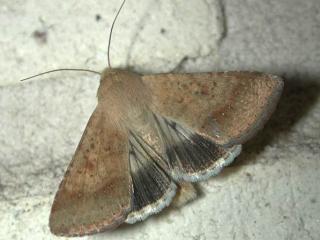Native budworm caterpillars may be increasing to damaging sizes in unsprayed crops
Caterpillar activity
- Pithara
- Ballidu
- Merredin
Agworld users have reported finding native budworm caterpillars in lupin crops near Pithara and Ballidu.
David Stead (Anasazi Agronomy) reports that a grower north-west of Merredin found 30-40 native budworm caterpillars (25-40mm long) in his early flowering lupins. These crops will be sprayed as soon as possible. Given the size of the caterpillars, these likely originated from the early flights of budworm during early July.
Although moth numbers being caught in surveillance traps have decreased in recent weeks, growers should be mindful of caterpillars increasing in size especially in unsprayed pulse and canola crops.
It takes about seven weeks from the egg stage to reach the fully-grown caterpillar stage of about 40mm long, given favourable temperatures. The last two growths stages (fifth and sixth instars, which are greater than 25mm in length) are responsible for eating over 90% of their total food consumption.
Native budworm moth trapping surveillance
- Usual automated and manual trapping locations
The higher budworm moth numbers reported this week by volunteer farmers, agronomists and DPIRD staff include; Wyalkatchem (57 moths), Cunderdin (47), Dowerin (33), Kellerberrin (31), Southern Cross (31), Varley (30), and Meckering (29)
A mapped view of the native budworm trap captures is available at cesar’s MothTrapVisWA page. For recent native budworm field reports refer to DPIRD’s PestFax map.
The economic spray threshold levels will vary with crop type, grain price and control cost; these can be calculated for each grower’s particular situation using a simple formula outlined in DPIRD’s Management and economic thresholds for Native Budworm page.
More information on native budworm can be found at DPIRD’s 2020 PestFax Issue 7 article Native budworm and other moths are active and PestFax Issue 10 article Native budworm update. Caterpillars are being found in cereals.
For more information contact Alan Lord, Technical Officer, South Perth +61 (0)8 9368 3758 or +61 (0)409 689 468.
Article author: Alan Lord (DPIRD South Perth).


